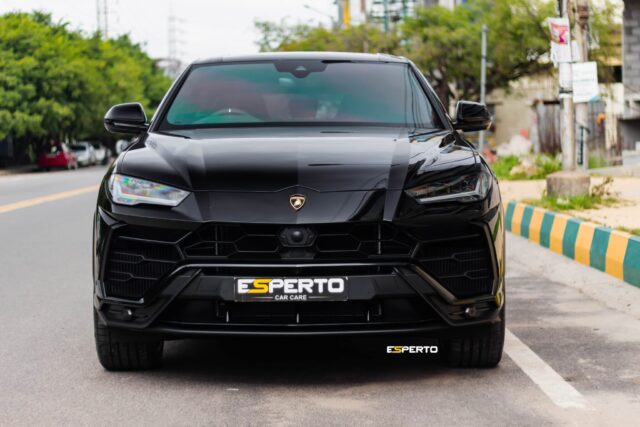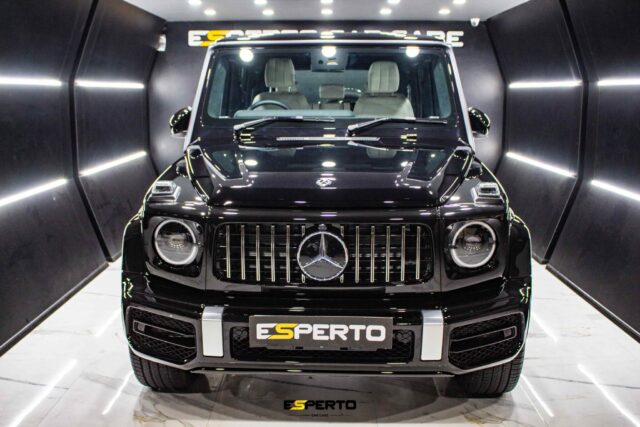Heat reduction window film is a sophisticated solution for enhancing sun control in various environments. By manipulating the transmission of solar energy through glass, these films can greatly reduce heat gain and glare while protecting interiors from UV damage. Exploring energy-efficient car sun film options reveals how similar technology can be adapted for vehicles, offering both thermal comfort and interior protection. Their ability to reflect and absorb specific solar wavelengths makes them a versatile addition to any space seeking improved energy efficiency and comfort. Understanding their mechanisms and benefits can be essential for making informed decisions in sun control strategies.
Key Takeaways
- Heat reduction window film reflects and absorbs solar energy, significantly improving sun control.
- It minimizes indoor heat gain, enhancing energy efficiency and comfort.
- The film reduces glare, improving visual comfort and reducing eye strain.
- It blocks harmful UV rays, protecting interior furnishings from sun damage.
- Lowering cooling costs offers a cost-effective solution for sun control.
How Does Heat Reduction Window Film Work?
Heat control window film is a specialized material designed to manage solar energy transmission through glass surfaces, effectively reducing heat gain within interior spaces.
It achieves this by employing advanced coatings that reflect and absorb specific wavelengths of solar radiation, thereby minimizing the amount of heat passing through windows.
The benefits of using heat reduction films include enhanced energy efficiency, improved indoor comfort, and protection against UV-related damage to furnishings.

What is Heat Control Window Film?
Window film technology is an innovative solution designed to enhance indoor comfort by reducing solar heat gain.
Heat control window film is a specialized product that addresses various aspects of sun control. Applying this film to windows effectively manages heat reduction through the rejection of solar heat and infrared radiation.
Reflective film and window tint options provide significant glare reduction and UV protection, ensuring a more comfortable and safe indoor environment. The film’s ability to reject heat enhances energy efficiency, contributing to lower cooling costs.
Additionally, it protects interior furnishings from fading due to prolonged sun exposure. This technology is an effective measure, offering a balance between maintaining natural light and minimizing the adverse effects of excessive sunlight.
How Does Window Film Reduce Heat?
By leveraging advanced material science, heat reduction window film operates on the principles of reflection and absorption to mitigate solar heat gain. This sun control window film uses layers of materials, including ceramic films, to achieve superior heat rejection. It effectively reflects infrared radiation, reducing the amount of heat entering a building. The film also absorbs a portion of solar energy, thereby minimizing heat gain. Additionally, it helps reduce glare, enhancing comfort within indoor spaces. Implementing such films can lead to decreased air conditioning costs due to their efficient heat reduction capabilities.
| Feature | Benefit |
|---|---|
| Reflection | Superior heat rejection |
| Absorption | Reduced heat gain |
| Infrared Blocking | Lower air conditioning costs |
These films play a critical role in energy conservation.
Benefits of Using Heat Reduction Films
Utilizing heat reduction window films offers significant advantages beyond their primary function of mitigating solar heat gain.
These window tint benefits include advanced heat-rejecting properties that effectively reduce the impact of the sun’s rays on interior spaces. By minimizing glare, they enhance visual comfort and reduce eye strain, especially during hot summer days.
The optical film technology incorporated in these window films plays an essential role in reducing heat gain, making interior environments more comfortable and energy-efficient.
In addition, they provide substantial protection against harmful UV rays, thereby preserving the longevity of interior.
What Are the Different Types of Window Films?
Window films come in various types, each with unique properties that cater to different needs, such as ceramic and carbon films, which differ regarding durability and heat rejection efficiency.
Reflective films, while effective in reducing glare and heat, may have drawbacks such as potential impacts on aesthetics and visibility.
Selecting the most suitable window film involves evaluating specific requirements and environmental conditions to optimize both performance and appearance.
Ceramic Films vs. Carbon Films
Although both ceramic and carbon films serve the purpose of reducing heat and glare through windows, they differ noticeably in their composition and performance characteristics.
Ceramic window films utilize nano-ceramic technology to block significant heat and UV rays without utilizing metalized films. This type of control window film is effective in reducing the amount of heat that enters a building or automotive window while minimizing heat loss.
Carbon films, on the other hand, employ carbon particles to achieve heat reduction. These films provide a matte finish and are effective in blocking heat and UV light.
While both ceramic and carbon films are non-metalized, ceramic films tend to offer superior clarity and longevity. Each type of window film delivers distinct advantages based on specific heat control needs.
Reflective Film: Pros and Cons
Reflective films are engineered to provide ideal sun control by reflecting a portion of sunlight away from the window surface. This characteristic considerably reduces heat transmission, thereby enhancing interior comfort.
Additionally, reflective film effectively minimizes glare, making environments more visually pleasing and less straining on the eyes. Blocking harmful UV rays also contributes to the preservation of interior furnishings.
Often compared to tinted glass, reflective films deliver superior heat reduction and sun control. However, they may alter external aesthetics, creating a mirrored effect that may not suit all preferences.
For best results, reflective films should be professionally installed and tailored to specific requirements.
How to Choose the Right Window Film for Your Specific Needs
When selecting the ideal window film for specific needs, it is essential to understand the range of options available, each designed with distinct features and benefits.
Different types of films provide varying levels of heat and glare reduction, making it essential to choose the best window film for peak performance.
Here are four common types of window films:
- Ceramic Films: Known for excellent heat rejection and minimal tint, these films are ideal for automotive applications, providing clear visibility while reducing indoor heat.
- Dyed Films: These control films offer effective glare reduction and are cost-efficient, though they may not provide significant heat rejection.
- Metalized Films: Combining tint and heat rejection, these films are durable but may interfere with electronic signals.
- Hybrid Films: Blend metalized and dyed elements for balanced heat and glare control without signal interference.
Can Window Film Reduce Glare and UV Rays?
Window films are engineered to considerably reduce glare and block up to 99% of harmful ultraviolet (UV) rays, thereby offering critical protection for indoor environments.
This UV blocking capacity not only safeguards furnishings from fading and deterioration but also contributes to maintaining a more stable indoor temperature by minimizing solar heat gain.
As a result, the application of window films can enhance comfort while extending the longevity of interior assets.
UV Protection Offered by Window Films
Although often overlooked of car improvements, the application of window films serves as an effective solution for reducing both glare and harmful ultraviolet (UV) rays.
Window film is one of the most efficient ways to enhance UV protection on glass surfaces. These films are designed to reflect a significant portion of UV light, contributing to lower heat transfer and maintaining cooler indoor environments during summer months.
Carbon films, a popular choice, not only minimize the amount of light and heat but also offer additional benefits.
- UV Protection: Reduces harmful UV exposure by up to 99%.
- Heat Reduction: Decreases solar heat gain, improving comfort.
- Glare Control: Mitigates harsh light reflections.
- Energy Efficiency: Supports lower cooling costs.
Impact on Furnishing and Indoor Heat
Because window films serve as a pivotal element in regulating indoor environments, their impact on furnishings and heat control is considerable.
Heat reduction window film reduces indoor heat while protecting furnishings from sun damage by filtering UV rays. On the hottest days, such films prevent much heat from entering, thereby enhancing comfort and reducing reliance on the air conditioning system. This results in energy efficiency and cost savings.
Dyed films, a type of window treatment, further enhance privacy by minimizing glare. These films provide a protective barrier, prolonging the lifespan of furniture and decor by minimizing exposure to harmful solar radiation.
As a part of a thorough window treatment strategy, heat reduction window films contribute significantly to a more comfortable and sustainable living environment.
Is Heat Rejection Film Effective for Cars?
Automotive window tinting offers significant benefits by enhancing comfort through effective heat rejection, protecting interior components, and improving energy efficiency.
Heat rejection films can block up to 60% of solar energy, depending on their Visible Light Transmission (VLT) and infrared blocking capabilities.
When comparing different films, it is essential to evaluate how VLT and infrared properties influence the overall heat reduction performance in vehicles.
Benefits of Automotive Window Tinting
When considering the benefits of automotive window tinting, heat rejection emerges as a paramount factor that considerably enhances the driving experience.
High-performance films are designed to offer ideal thermal management, reducing the reliance on air conditioning and thereby increasing fuel efficiency. A film is one of the best solutions for achieving this, as it can effectively minimize interior temperature.
- Cost Efficiency: Multi-layer films provide superior heat rejection at a fraction of the cost of installing new window systems.
- Light Transmission: Advanced films allow more light while blocking harmful UV rays, ensuring clear visibility.
- Privacy: Enhanced privacy is achieved without compromising the aesthetic appeal of the vehicle.
- Durability: These films are designed to withstand environmental factors, maintaining their effectiveness over time.
How Much Heat Can Car Films Block?
High-performance window films are not only cost-effective but also highly efficient in blocking considerable amounts of heat, which is a primary consideration in automotive window tinting.
These films can reject up to 60% of solar energy, markedly reducing interior temperatures. Such effectiveness is achieved by utilizing advanced materials that reflect and absorb infrared and ultraviolet radiation.
When applied to a single pane, the film also acts as a thermal barrier, enhancing comfort without compromising visibility. Automotive films are engineered for various widths and lengths, ensuring they fit certain window dimensions precisely.
This customization is essential, especially for vehicles with uniquely shaped or blind spots that require precise coverage. Ultimately, the application of heat rejection film can lead to improved fuel efficiency by reducing reliance on air conditioning systems.
Comparing VLT and Infrared Properties
VLT and infrared properties are key metrics in determining a film’s performance. VLT indicates the percentage of visible light that can pass through a film, influencing aesthetics and visibility. Infrared rejection indicates the film’s ability to block heat-generating infrared rays, impacting temperature control.
These properties are essential for evaluating a film’s sun control effectiveness. Key differentiators include:
- VLT Percentage: Higher VLT allows more light, enhancing visibility but potentially allowing more heat.
- Infrared Rejection Rate: Higher rates lead to superior heat reduction, contributing to passenger comfort.
- UV Protection: Films often incorporate UV-blocking capabilities, enhancing protection against harmful rays.
- Material Composition: Advanced materials, like ceramic coatings, improve infrared rejection without compromising VLT.
How to Install and Maintain Heat Reduction Window Film?
The installation of heat reduction window film involves precise steps, beginning with thorough cleaning of the glass surface to guarantee ideal adhesion.
Regular maintenance, such as gentle cleaning with non-abrasive solutions, is essential to prolong the film’s effectiveness and appearance.
Common mistakes, including improper sizing and application in direct sunlight, can compromise the film’s performance and longevity, highlighting the need for meticulous adherence to guidelines.
Steps to Proper Window Film Installation
Installing heat reduction window film requires a systematic approach to guarantee peak performance and durability. The process begins with precise surface preparation, ensuring windows are impeccably clean.
Next, measurement accuracy is essential to cut the film to exact dimensions. The installation process itself demands attention to detail to avoid air bubbles and creases, which compromise efficacy.
Here are the steps for proper installation:
- Cleaning: Thoroughly clean the window using a solution of soap and water, ensuring the removal of all dirt and residues.
- Measurements and Cutting: Measure the window accurately and cut the film slightly larger than the window size.
- Application: Apply the film to the window using a squeegee to smooth out bubbles.
- Trimming: Trim excess film along the edges for a clean fit.
Maintenance Tips for Longevity
Once the heat reduction window film is installed with meticulous care, its longevity and ideal performance become the next focus. Routine maintenance is paramount.
Begin by using a soft cloth and mild, non-abrasive cleaning solution to avoid scratching. Ensuring the cleaning solution is ammonia-free preserves film integrity.
Regularly check for signs of edge lifting or bubbling, addressing issues promptly to prevent further damage. Avoid exposure to sharp objects and harsh chemicals, which can compromise the film’s adhesive properties.
Inspect the film periodically for any discoloration or wear, which may indicate the need for replacement. Adequate ventilation can reduce heat buildup on the film surface, further extending its lifespan.
Common Mistakes to Avoid
Many individuals inadvertently compromise the effectiveness of heat reduction window film by making avoidable errors during installation and maintenance.
These oversights can diminish the film’s performance and longevity. Key mistakes include:
- Improper Surface Preparation: Failure to thoroughly clean and dry the window surface can lead to poor adhesion, causing bubbles or peeling.
- Incorrect Application Techniques: Using inadequate tools or applying excessive pressure may result in uneven film placement and air entrapment.
- Neglecting Curing Time: Insufficient curing time can weaken the bond between the film and glass, reducing its heat-reducing capabilities.
- Substandard Maintenance: Employing harsh chemicals or abrasive materials during cleaning can scratch the film, affecting its efficiency and appearance.
Adhering to proper installation and maintenance guidelines is essential for optimizing the film’s sun control properties.
What is the Cost of Car Sun Control Window Film?
The cost of sun control window film involves an initial investment that varies based on factors such as film quality, window size, and professional installation fees.
While the upfront expense may appear significant, the long-term savings on air conditioning costs can offset this, as the film reduces heat gain and improves energy efficiency.
Additionally, sun control window films offer enhanced privacy and can augment the aesthetic appeal of a building, adding further value to the investment.
Understanding the Initial Investment
While the upfront costs of sun control window film might appear significant, an understanding of its financial implications reveals a compelling investment over time.
The initial investment in sun control window film encompasses several factors that contribute to its overall cost-effectiveness. Key considerations include:
- Material Selection: Different types of films, such as ceramic or metalized, differ in cost due to their thermal performance and durability.
- Installation Costs: Professional installation guarantees ideal performance and can vary based on window size and accessibility.
- Warranty and Lifespan: Films with longer warranties and extended lifespans offer better value, though they may be higher in price initially.
- Energy Efficiency Benefits: Immediate reduction in solar heat gain can lessen cooling load demands, impacting energy savings calculations.
Grasping these components is crucial for accurately assessing the initial financial investment.
Enhanced Privacy and Aesthetic Value
Although often overlooked in the evaluation of sun control window films, enhanced privacy and aesthetic value are significant advantages that merit attention.
These films not only mitigate solar heat and glare but also offer visual and functional enhancements.
Key benefits include:
- Privacy Enhancement: Through reflective or frosted designs, window films obscure direct views from the outside, maintaining interior privacy without compromising natural light.
- Aesthetic Customization: Available in various shades and patterns, films can complement architectural styles, offering a tailored visual appeal.
- UV Protection: By blocking up to 99% of harmful UV rays, films prevent interior fading, preserving furnishings and artwork.
- Cost-Effective Alternative: Compared to curtains or blinds, window films provide a sleek, modern solution that integrates seamlessly with existing decor.
Incorporating shatter resistant film into your sun control strategy not only enhances comfort and appearance but also improves overall safety and peace of mind.
Conclusion
In summary, heat reduction window film serves as an effective solution for enhancing sun control by managing solar energy transmission through glass. These films reduce heat gain and glare while protecting interiors from harmful UV rays, thereby improving energy efficiency and occupant comfort. They are suitable for automotive applications, offering a cost-effective method for lowering cooling expenses. Proper installation and maintenance are essential for maximizing their benefits, making them a practical investment for sun control.








